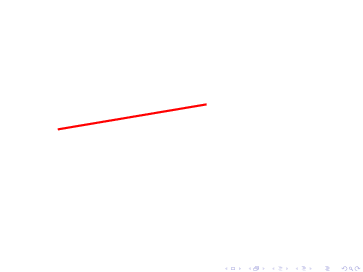foot => [[$xstart,$ystart],[$xend,$yend]] fpolar => [[$rstart,$phistart],[$rend,$phiend]]will put the start and the end coordinates of one end of the line to
($xstart,$ystart) + $rstart*(cos($phistart),sin($phistart)) ($xend,$yend) + $rend*(cos($phiend),sin($phiend))The options head and hpolar, defined in the same way as foot and fpolar, will determine the position of the other end of the line.
The aximation on the right corresponds to
line({"type" => "line",
"color" => "Red",
"foot" => [[20,20],[-50,-50]],
"fpolar" => [[10,30],[60,720]],
"head" => [[-120,0],[70,-50]],
"hpolar" => [[0,10],[0,80]]});
